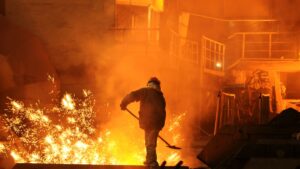Bulk Metals: Metallica rocks high purity silica sand results in Queensland

Pic: John W Banagan / Stone via Getty Images
It may seem like boring old sand, but high purity silica sand is actually a valuable commodity used for glass-making, water filtration and increasingly for high tech products such as solar panels.
And Metallica Minerals (ASX:MLM) has now confirmed the presence of high purity sands at its wholly-owned Cape Flattery silica sands (CFSS) project in northern Queensland following the completion of an auger sampling program.
Most of the auger holes returned drill intercepts averaging between 96.1 per cent and 99.1 per cent silica oxide, along with 1m sample intervals containing more than 99 per cent silica oxide.
The results from the eastern most target area are comparable to known deposits in the region, which include Mitsubishi’s Cape Flattery silica sands mine — the world’s largest silica sands mine.
Metallica is planning further exploration to establish a maiden resource, carry out preliminary sand recovery test work and progress concept work on an infrastructure solution to load ocean going vessels.
“Metallica is very encouraged by these results that further confirm the potential of the CFSS project, particularly due to the project being adjacent to the designated Cape Flattery port area,” interim chief executive officer Scott Waddell said.
NOW READ:
Australia can now join the silica sands race thanks to a global supply crisis
Over in Western Australia, Macarthur Minerals’ (ASX:MIO) infill drilling program has intersected magnetite mineralisation at its Lake Giles iron project near Kalgoorlie.
Top hits from drilling at the Moonshine North deposit included a 101m intersection grading 28.4 per cent iron, 84m at 30.4 per cent iron and 53m at 32.8 per cent iron.
“This is an outstanding result that builds our confidence to upgrade the resource classification to include indicated and measured mineral resources,” executive chairman Cameron McCall said.
“The updated mineral resource, when completed, will underpin the feasibility study to be completed for the Lake Giles iron project.”
Lakes Giles currently has a resource of about 710 million tonnes grading 30.2 per cent iron.
UNLOCK INSIGHTS
Discover the untold stories of emerging ASX stocks.
Daily news and expert analysis, it's free to subscribe.
By proceeding, you confirm you understand that we handle personal information in accordance with our Privacy Policy.








